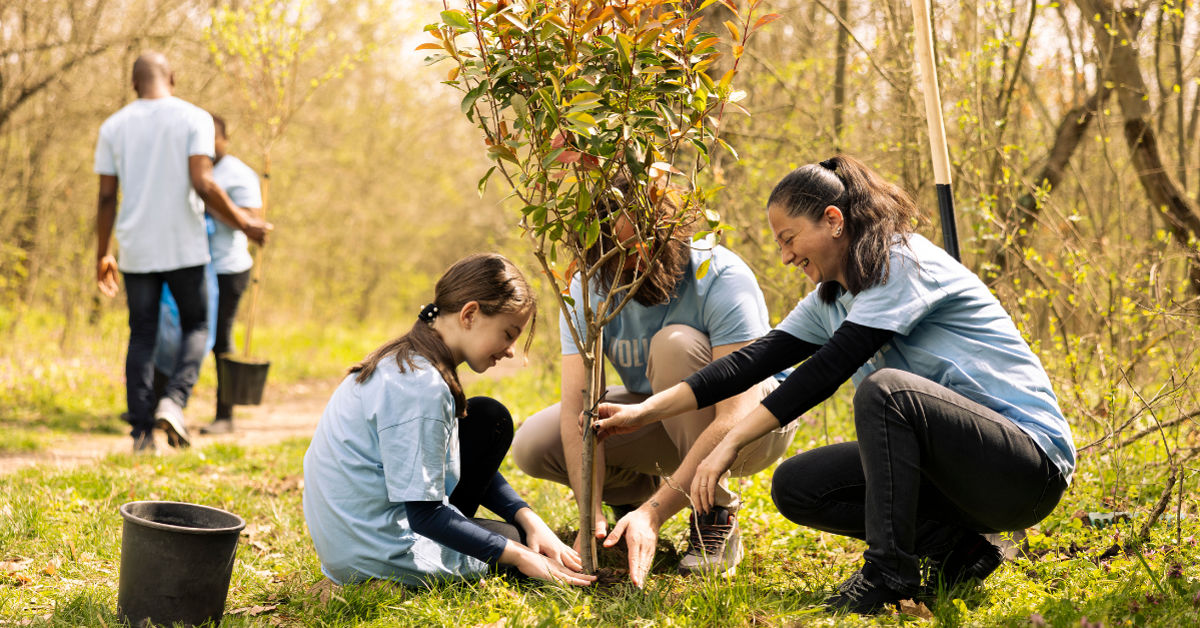Habitat restoration has long been a key strategy in protecting biodiversity and conserving our planet’s natural resources. However, the emerging concept of holistic habitat shifts the focus from isolated efforts to a more integrated, multi-dimensional approach. This method emphasizes healing ecosystems by considering ecological, social, and cultural dimensions simultaneously.
Holistic habitat, or holistic habitat healing, is a transformative vision that expands traditional restoration to include community participation and familial forestry practices. This article will explore how this approach redefines ecosystem management and the benefits it offers to the environment and society alike.
What Is Holistic Habitat?
Holistic habitat refers to the comprehensive restoration and nurturing of ecosystems that accounts for:
- Ecological health: Reviving native flora, fauna, and natural processes.
- Community engagement: Involving local people in stewardship and decision-making.
- Familial Forestry: Encouraging family and intergenerational involvement in forest care and sustainable land management.
By integrating these aspects, holistic habitat healing fosters resilient ecosystems and empowered communities.
Why Traditional Habitat Restoration Needs a Holistic Shift
Traditional restoration efforts often focus solely on replanting vegetation or protecting a specific species. While valuable, this approach can overlook other crucial factors:
- The socio-economic context of local communities.
- Cultural connections to the land.
- The interdependent relationships between species and ecosystems.
Holistic habitat addresses these gaps by weaving ecological restoration together with human and cultural dimensions, creating a balanced and sustainable model for long-term success.
Core Principles of Holistic Habitat Healing
To truly grasp holistic habitat, it’s essential to understand its foundational principles:
1. Ecosystem Interconnectedness
Every element in an ecosystem—from soil microbes to apex predators—is connected. Holistic habitat restoration honors these relationships by restoring habitats in a way that supports biodiversity, soil health, and water cycles.
2. Community-Centered Approach
Local communities are caretakers of their environment. Holistic habitat emphasizes collaboration with residents, incorporating indigenous knowledge, and fostering shared responsibility.
3. Familial Forestry
This innovative concept promotes families and multiple generations working together to care for forests and green spaces. It strengthens bonds while nurturing a sense of stewardship and sustainability.
4. Long-Term Vision
Rather than quick fixes, holistic habitat prioritizes long-lasting resilience and adaptability, considering future environmental changes and social dynamics.
The Role of Familial Forestry in Holistic Habitat
Familial forestry is a distinctive feature that sets holistic habita’t apart. It encourages families to engage in reforestation, sustainable harvesting, and ecosystem monitoring together.
Benefits of Familial Forestry Include:
- Knowledge transfer: Elders pass down environmental wisdom to younger generations.
- Stronger community ties: Shared responsibility promotes cooperation and trust.
- Sustainable practices: Families develop deep connections, leading to more careful land management.
This multi-generational involvement helps ensure the longevity and vitality of restoration efforts.
Practical Applications of Holistic Habitat Healing
Several projects worldwide demonstrate the power of this approach:
Community Forest Management in Nepal
Local families participate in forest regeneration while sharing traditional ecological knowledge. This has led to increased biodiversity and improved livelihoods.
Urban Green Spaces with Community Engagement
In cities, involving neighborhood groups in park restoration and maintenance creates healthier environments and fosters social cohesion.
Indigenous-Led Habitat Restoration
Indigenous communities combine cultural practices with ecological science to restore lands in a way that honors both nature and heritage.
Table: Comparing Traditional Habitat Restoration vs. Holistic Habitat Healing
| Aspect | Traditional Habitat Restoration | Holistic Habitat Healing |
| Focus | Species or vegetation restoration | Ecosystem health + social + cultural healing |
| Community Involvement | Limited or external | Central to process |
| Approach to Forestry | Commercial or fragmented | Familial, intergenerational |
| Timescale | Often short-term | Long-term, adaptive |
| Knowledge Integration | Primarily scientific | Science + indigenous + local knowledge |
| Success Metrics | Survival rates of plants/species | Biodiversity + community well-being |
Benefits of Adopting a Holistic Habitat Approach
Implementing holistic habita’t principles leads to numerous advantages:
- Enhanced biodiversity: Healthy ecosystems with balanced species populations.
- Increased resilience: Ecosystems better withstand climate change and human pressures.
- Empowered communities: People develop stewardship skills and cultural pride.
- Sustainable resource use: Families and communities practice responsible forestry and land care.
These benefits demonstrate how the holistic habita’t approach contributes to both environmental and social sustainability.
How to Implement Holistic Habitat Healing in Your Community or Project
Here are key steps to adopt this approach effectively:
- Assess Ecosystem and Social Contexts
Conduct thorough ecological and community needs assessments to understand challenges and opportunities. - Engage Local Stakeholders Early
Involve families, indigenous groups, and local leaders in planning and decision-making. - Integrate Familial Forestry Practices
Encourage multi-generational participation in planting, maintenance, and monitoring. - Use Adaptive Management
Continuously monitor progress and be ready to adjust methods based on feedback and changing conditions. - Promote Education and Knowledge Sharing
Facilitate workshops, storytelling, and community events to strengthen environmental awareness.
Real-Life Example: Holistic Habitat in Action
In a small rural community, a holistic habita’t project was launched to restore a degraded forest. The project team combined scientific restoration techniques with active participation from local families. Each household adopted a section of the forest to care for, learning sustainable harvesting and native planting methods.
Over five years, the forest showed marked improvement in tree density and wildlife sightings. Simultaneously, the community reported stronger relationships and increased environmental knowledge passed between generations.
Challenges and Solutions in Holistic Habitat Healing
No approach is without obstacles. Some common challenges include:
- Limited funding and resources
- Resistance to new practices
- Balancing diverse stakeholder interests
Addressing these requires:
- Seeking diverse funding sources including grants and community fundraising.
- Providing education to build trust and demonstrate benefits.
- Facilitating open communication and conflict resolution.
Table: Holistic Habitat Healing Challenges and Solutions
| Challenge | Description | Suggested Solution |
| Funding Constraints | Limited financial support for long-term work | Apply for grants; foster partnerships |
| Community Resistance | Hesitation to adopt unfamiliar methods | Conduct workshops; showcase success stories |
| Stakeholder Conflicts | Differing priorities among groups | Facilitate dialogue; create shared goals |
| Ecological Uncertainty | Climate change impacts and unknown factors | Implement adaptive management |
Conclusion
Holistic habitat represents a forward-thinking and comprehensive model for ecosystem restoration and environmental healing. By embracing ecological complexity, community involvement, and familial forestry, this approach creates resilient landscapes and empowered societies.
As we face increasing environmental challenges, adopting holistic habita’t healing can pave the way toward sustainable coexistence with nature. Whether you are a conservationist, community leader, or concerned citizen, integrating this approach can lead to meaningful and lasting change.
Frequently Asked Questions (FAQs)
What is the difference between traditional habitat restoration and holistic habitat?
Traditional restoration often focuses on specific species or vegetation, while holistic habita’t considers ecological, social, and cultural factors to create a more integrated and sustainable restoration.
How does familial forestry contribute to ecosystem health?
By involving families across generations, familial forestry fosters long-term stewardship, knowledge transfer, and sustainable land practices.
Can holistic habitat healing be applied in urban areas?
Yes, engaging local communities in urban green space restoration creates ecological and social benefits aligned with holistic habita’t principles.
What role does community engagement play in holistic habita’t?
Community involvement is central, ensuring restoration efforts reflect local needs, knowledge, and cultural values.
How long does holistic habita‘t restoration take?
It varies, but the focus is on long-term resilience and adaptability rather than quick fixes, often spanning several years or decades.







